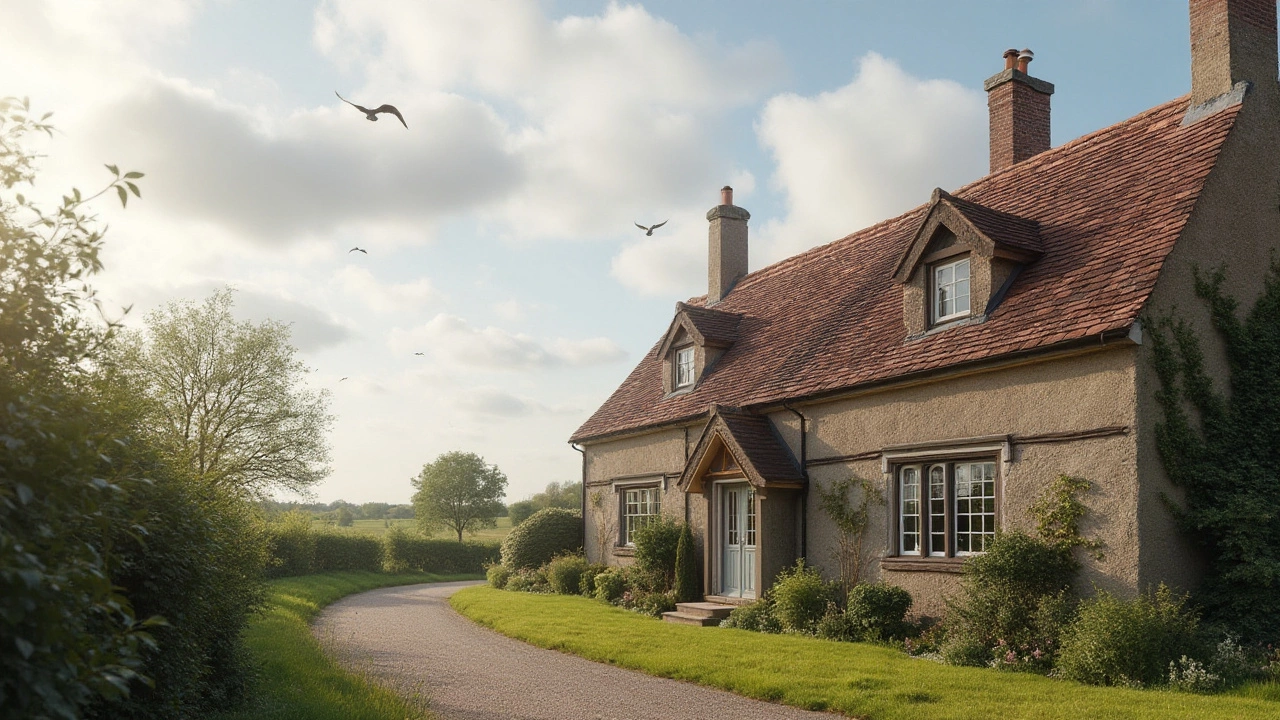When it comes to home improvement, few projects are as daunting and costly as roof work. Whether you're looking at repairs or a full installation, the price tag can often catch homeowners off guard. So, why exactly does roofing come with such a hefty price?
One major contributor is the cost of materials. Quality roofing materials such as asphalt shingles, metal roofing, or tiles not only provide durability but also ensure weather resistance. Each option comes with its price point, directly affecting the total cost.
Another significant factor is the labor involved. Roofing is not just any job; it demands skill, precision, and expertise. Skilled roofers employ years of experience to ensure your home remains protected, but this expertise comes at a price.
Safety on job sites is crucial as well, especially considering the risks involved in working at heights. Regulations require appropriate safety measures to be taken, contributing further to costs.
Fortunately, there are ways to save money without cutting corners. Being informed, comparing quotes, and opting for off-season work can help reduce expenses while maintaining quality. Understanding these factors will not only help you appreciate the costs but also allow you to make informed decisions about your roofing needs.
Cost of Materials
When diving into the potential costs behind any roofing project, it's impossible to overlook the essential element of roofing materials. The choice and quality of materials can dramatically sway the total expenses, often standing as the cornerstone of overall budget considerations. From asphalt shingles—popular for their affordability and decent lifespan—to high-end options like slate tiles, each material brings its unique set of features, benefits, and, importantly, costs. For example, while asphalt offers an accessible entry point for many homeowners, its lifespan of around 20 years is overshadowed by slate's potential longevity of over a century. This robustness comes with a price, high both in monetary value and installation intricacies.
As a roofing expert once stated, "Choosing quality materials isn't just about aesthetics; it's an investment in your home's future." This wise sentiment rings particularly true when examining how material choice plays into long-term savings. Investing upfront in more durable roofing materials often translates into fewer repairs and replacements over time, which can provide unexpected financial relief in the years ahead. Consider also the impact of regional weather patterns on material selection; where heavier rains are common, metal roofing may offer a more substantial defense against potential leaks.
The staggering diversity in roofing options doesn't end there. Let's venture into metal roofing, renowned for its durability and energy efficiency. While the initial sticker shock might surprise some—it tends to be pricier compared to its asphalt counterpart—the potential for energy savings in hotter climates adds an intriguing dimension. Metal reflects solar heat, which can significantly reduce cooling costs during blistering summer months, making it a smart choice for eco-conscious homeowners wishing to cut down on utility expenses. On the flip side, regions with heavy snowfall might lean towards clay or concrete tiles, credited for their weight and insulating properties that help combat the chill.
Additionally, consider the rise of synthetic roofing materials making waves in the market today. These composites often blend the aesthetic appeal of more traditional materials with the cutting-edge durability and reduced maintenance needs many modern homeowners crave. However, tailoring your choice of roofing materials to the specific environment around your home isn't just a savvy financial move; it's a tribute to sustainable living practices encouraged globally. It's fascinating how vibrant the roofing landscape has become, offering both classic and innovative solutions to the age-old challenge of keeping a home protected from the elements.
To better illustrate the cost spectrum, consider the following:
| Material Type | Average Cost per Square Foot |
|---|---|
| Asphalt Shingles | $1 - $3 |
| Metal Roofing | $5 - $12 |
| Clay/Concrete Tiles | $10 - $18 |
| Slate | $30 - $50 |

Labor and Expertise
Roofing is a profession that demands a high level of skill and dedication, reflected in the labor costs associated with roofing projects. The task is not merely about laying shingles; it requires a deep understanding of architectural principles, weatherproofing techniques, and safety protocols. Professional roofers undergo extensive training to handle a variety of roofing materials and to adjust their techniques according to the specific needs of each house. This specialized knowledge and hands-on expertise naturally contribute to the overall expense involved in roof repair and installation.
One of the primary reasons labor costs are high is due to the precision required in roofing work. A slight miscalculation in measurement or the incorrect installation of a roofing component can lead to significant issues, including leaks or structural damage. Roofers meticulously assess the current state of a roof, calculate the precise measurements needed for materials, and ensure the pitch, insulation, and ventilation systems are up to code. It's this attention to detail that protects your home from the elements, but such precision does require investing significantly in their labor costs.
Moreover, roofing is one of the most physically demanding construction jobs, which adds to labor expenses. Roofers work in all kinds of weather conditions, from the scorching heat of summer to the biting cold of winter. The physical demands of carrying heavy materials and maintaining balance on sloped surfaces mean that roofers need to be fit, strong, and extremely careful. Consider the heights at which they operate, where a small misstep can result in serious injury—or worse. This inherent risk factor in roofing jobs commands a premium price for labor, as it rightly should.
John McDonald, a well-known industry expert and former roofer, once said, "Roofing is not just a trade; it’s a craft that requires a precise blend of physical strength, technical knowledge, and intuitive skill that comes only with experience." This truth highlights why finding trained professionals is crucial and why such expertise doesn’t come cheap.
Additionally, as building codes and regulations become increasingly stringent, roofers must stay updated with the latest industry standards and safety protocols. Continuous education is often required, which comes at a financial and time investment for the professionals themselves, indirectly affecting the cost of labor. Roofers invest in certifications and, often, specialized equipment to ensure that their work meets all necessary legal and safety requirements, providing peace of mind to homeowners.
Given these aspects, it becomes clear how much dedication and skill go into every roofing project. Homeowners should consider these factors when evaluating roofing quotes and appreciate that the costs are a direct reflection of the necessary expertise and rigorous work involved. Being informed and recognizing the value of expert labor can help in making wise investment choices for your home’s protection and longevity.

Safety and Regulations
Safety and adherence to regulations are often underestimated elements that significantly impact the cost of roofing services. When roofers work high above the ground, the potential for accidents is a reality that must be managed diligently. OSHA, the Occupational Safety and Health Administration, has put forth guidelines to ensure that roofing work sites safeguard the well-being of workers. These regulations mandate proper training, use of harnesses, guardrails, and fall arrest systems. It is not just about compliance but about creating a culture of safety that protects everyone involved.
Adhering to these safety measures requires investment in equipment and training. Safety gear such as helmets, harnesses, and other personal protective equipment comes with its own costs. Moreover, training programs that acquaint workers with the latest safety protocols are crucial. These are not one-time expenses but ongoing commitments that responsible roofing companies make to their workforce. This inevitably reflects in the pricing of their services, ensuring that roofers can carry out their duties efficiently and without undue risk.
A layer of complexity is added when considering the insurance that roofing companies must maintain. Liability insurance and workers' compensation policies provide financial protection in case something goes awry. These policies are not optional; they are vital protections for both the company and the homeowner. Insurance premiums can be hefty, particularly for high-risk jobs like roofing. Responsible roofing companies prioritize these insurance policies, offering peace of mind and reinforcing professional accountability.
Moreover, local building codes play a part in roofing expenses. Regulations can differ from one region to another, affecting choices of materials and methods of installation. Complying with these codes ensures structural integrity and longevity of the roof while avoiding legal repercussions. Failing to meet these standards can lead to fines and forced rework, which can drive up costs unexpectedly.
"Prevention through Design (PtD) is a long-term method to eliminate hazards and minimize risks to workers that affect roofing projects," says the National Institute for Occupational Safety and Health (NIOSH).
In summary, while safety and regulation compliance can elevate the cost of roofing, they are non-negotiable in cultivating a safe work environment. For homeowners, understanding these dynamics can mean valuing quality and peace of mind over the temptation of lower bids that might compromise safety. Thus, when you pay for roofing services, you aren't just investing in your home — you're also ensuring the safety and security of the people working atop your roof.

Tips to Save on Roofing
Saving money on roofing costs doesn't mean you have to sacrifice quality. With some savvy steps, you can achieve a sturdy, lasting roof without emptying your wallet. First, consider timing. Just like the vacation industry has peak seasons, roofing contractors face their busiest periods in late spring and summer. By scheduling your roof work during the off-peak fall or winter months, you might snag a substantial discount simply because demand isn't as high. This strategic timing not only potentially saves you some cash, but it might also mean faster service and more personalized attention as contractors juggle fewer clients.
Comparison shopping is another effective strategy. Don't just stop at the first quote you receive. Gather estimates from several respected contractors and scrutinize each one. Pay close attention to material costs, labor charges, and any additional fees. It’s crucial to ensure each quote includes the same scope of work for a fair comparison. Engaging in this diligent process often reveals differences in pricing and scope, empowering you to make an informed decision. Just remember, the lowest quote isn't always the best. Balance cost against the contractor’s reputation, as an experienced and skilled roofer can save you on potential future repairs.
If replacing your roof isn't urgent, you could save a significant penny by doing smaller repairs to extend its life. Simple fixes like resealing leaks or replacing damaged shingles can postpone a full replacement, allowing you more time to prepare your finances. Sometimes, these modest repairs offer superb returns by prolonging the lifespan of your roof. As with major jobs, get quotes from expert roof repair services and research each suggested solution. Another wise move is to explore any available discounts or rebates offered by your insurance company or local government, which can sometimes subsidize energy-efficient upgrades.
Material selection plays an enormous role in pricing, too. Choose quality materials within your budget that also add longevity to your roof. While premium options like slate or metal can be enticing, mid-range options like asphalt shingles balance cost and durability effectively. If you're settled on a high-end material for its aesthetic appeal or enhanced lifespan, consider mixed materials. Mixing materials for different sections can give you the balance you need between economic and aesthetic concerns, sparing critical areas for the priciest choice. Remember, saving money isn't just about picking the cheapest option right away but planning for future durability as well.
Uncovering clever methods to save on roof repair might be simpler than you think. An educational treasure trove lies within online reviews and community forums where other homeowners share their experiences and tactics. As many have tread this path before, learning from their successes and challenges can guide you to make wiser decisions without falling into common pitfalls. It’s about weaving together a tapestry of shared knowledge and financial foresight in your roofing endeavors. Finally, don't underestimate the power of a good negotiation. A strong relationship with your contractor, built on mutual respect and clear communication, often grants room for flexibility in pricing, cementing this tactic as a key tool in your money-saving arsenal on any roofing project.





